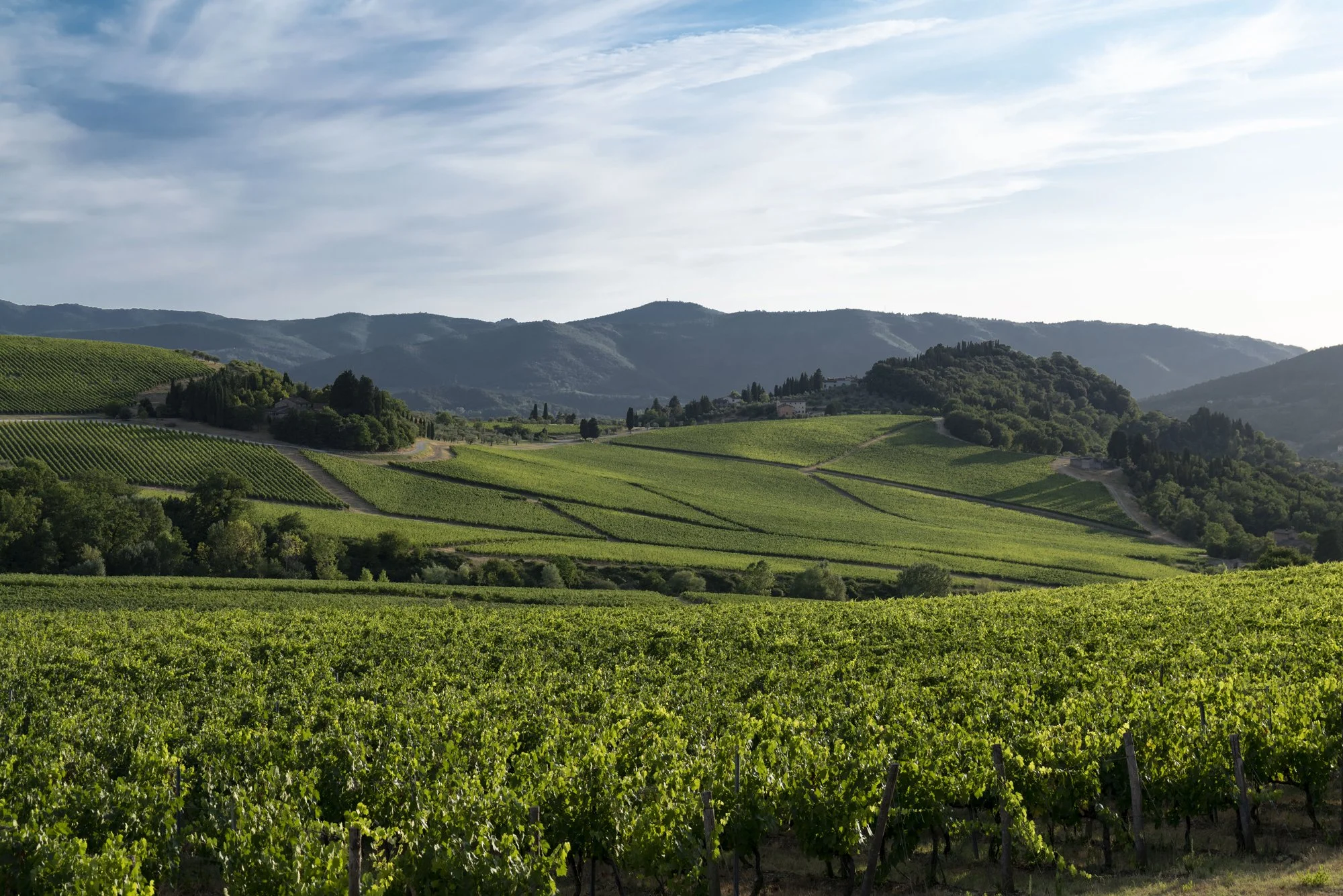▻ Chianti Rufina
In conversation with Lorenzo Portaro of Castello Nipozzano
Episode Summary:-
Chianti Rufina is not as well-known as the Chianti Classico region, yet it was first identified as a great wine-producing region back in 1716 by Cosimo III de Medici. The Frescobaldi family, one of Florence’s most noble families since the 13th century, is the largest producer there, with Castello Nipozzano, which represents 20% of the region’s vineyards. Sarah Kemp talks to Castello Nipozzano’s winemaker, Lorenzo Portaro, about the wines of Chianti Rufina and how they differ from Chianti Classico. Chianti Rufina is northeast of Florence, in the foothills of the Apennine mountains, where a pass allows a cooling maritime breeze through, helping to create elegant, long-lived wines. Portaro explains how Chianti Rufina is a smaller, homogenous area (800 hectares), compared to Chianti Classico (7,000 hectares). The soil in the region is excellent, a mix of limestone, clay, sandstone and marl.
““For me, Burgundy is the archetype of what we want to do here – focus all on the parcel.””
Portaro, a native of Tuscany, returned to his home region after working at Château Haut Brion and with the great Australian winemaker Steve Pannell. What brought him back was the chance to work with the Frescobaldi family, whom he admires for “The capability of the family to maintain tradition and roots of the past, and future values”. He is keen to maintain tradition, but there are some changes he is making at Castello Nipozzano. Inspired by his time at Château Haut Brion, Portaro’s main challenge has been to manage the extraction during fermentation, and he describes how he has reduced the punch-down, extracting more gently. While discussing the ability of the wine to age, he reveals that he was incredibly impressed by the 1980 vintage, which was recently released; he found it still youthful and vibrant.
As is occurring everywhere, the Frescobaldi wines are having to adapt to climate change. In 2013, Merlot was replaced by Sangiovese. “We replaced Merlot with Sangiovese because we wanted freshness with a good structure and the ageability of Sangiovese,” he notes, and describes the region’s wine profile enthusiastically: “The main character is the backbone of acidity, saltiness, minerality and good – very good – structure, full-bodied red fruit, not cooked fruit, very elegant wines; this sort of acidity is very important for ageing.”
At Castello Nipozzano, they make four wines, the Reserve (which typically can be bought for around £17- £19), Vecche Vitii which is made from old vines and has a typical Chianti blend of Sangiovese and indigenous grapes, and then two single crus, Montesodi, whose first vintage was 1974 and was the region’s first cru, 100% Sangiovese, and Mormoreto whose first vintage was 1983 and was 100% Cabernet Sauvignon. Since then, it has been a Bordeaux blend with Sangiovese included from 2013. Bordeaux varieties were introduced to Tuscany by the Frescobaldi family in 1855 when they invested 1,000 florins to begin the cultivation of Cabernet Sauvignon, Merlot, Cabernet Franc and Petit Verdot, and Portaro explains they do not see those varieties as foreign any more.
As the leading producer in Chianti Rufina, he believes it is important that the area receives the recognition it deserves. A new category has been created, known as Terrelectae, whereby participating producers will be able to designate a single-vineyard wine or cru made from Sangiovese. “Terraelectae” will be printed on the label along with the name of the single vineyard. Currently, 12 out of the 22 producers in Chianti Rufina have joined this initiative. All Terraelectae wines must be 100% Sangiovese, aged for 30 months, with at least 18 months in barrel and 6 months in bottle before being released on to the market. “In the past, the trend was to make a full-bodied wine… now the tendency is to go for elegance, for freshness, and Sangiovese is the answer,” Portaro explains. His time in Burgundy has clearly influenced him: “For me, Burgundy is the archetype of what we want to do here-- focus all on the parcel”.
Running Order:-
-
0.00 – 10.27
“We replaced Merlot with Sangiovese because we wanted freshness, with a good structure and ageability.”
– Lorenzo Portaro winemaker at Castello Nipozzano discusses the terroir of Chianti Rufina.
– Differences between Chianti Classico and Chianti Rufina.
– Historical importance of Chianti Rufina.
– The history of Castello Nipozzano and the Frescobaldi family.
– Lorenzo Portaro’s time with Steve Pannell and at Château Haut Brion.
– Replacing Merlot with Sangiovese.
– The characteristics of Chianti Rufina wine. -
10.28 – 22.41
"In the past, the trend was to make a full-bodied wine … the tendency now is to go for elegance, freshness, and Sangiovese is the answer.”
– The four wines of Castello Nipozzano, Castello di Nipozzano Chianti Rufina Riserva, Vechie Viti, Montesodi and Mormoreto.
– Changes in winemaking practice – gentler extraction.
– The ability of the wines to age.
– Chianti Rufina’s new initiative, “Terrelectae” single cru 100% Sangiovese wines.
– The latest vintages on the market.
RELATED POSTS
Keep up with our adventures in wine














Jane Anson and Sarah Kemp’s first impressions of the Bordeaux 2024 vintage – there is much to discuss!